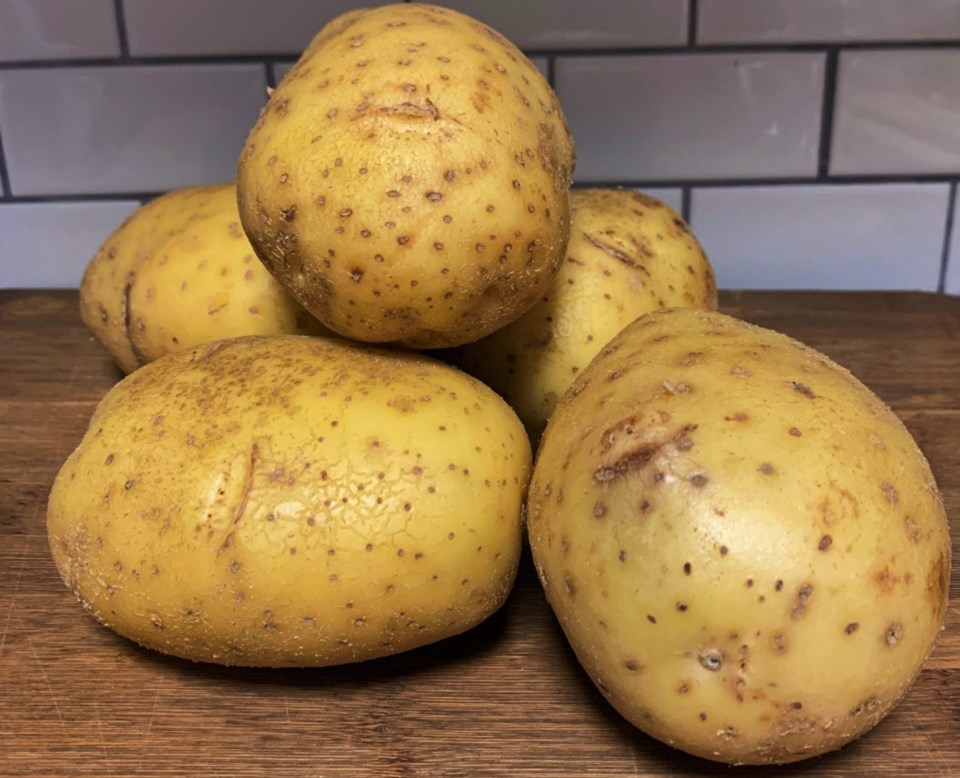The humble potato has a fascinating history, and Guelph played a part in it.
There are 5,000 varieties of the tuber, and it is the world’s fourth-largest food crop after corn, wheat and rice. Spanish conquistadors found the Incas of South America cultivating potatoes, and they sent some back to Spain.
The potato would prove to be more valuable than all the gold and silver the Spaniards looted from the Inca empire. It would be grown as a dietary staple from Ireland all the way to China.
Places like Prince Edward Island and Idaho became famous for their potatoes. Fred Astaire and Ginger Rogers sang “You like potato and I like po-tah-to,” and Stompin’ Tom Connors wrote a song about Bud the Spud. A kids’ toy called Mr. Potato Head began as an actual potato before it went plastic.
When we were children, we decided who would be “It” by saying “One potato, two potato, three potato, four …”
We can have our potatoes mashed, boiled, fried, scalloped, baked or roasted. We serve potatoes in soups, stews and salads. We eat them as French fries, better known as chips if they come with fish. Those chips aren’t to be mistaken for the potato chips that come in a crinkly bag and are eaten as a snack food which the British call crisps.
Clearly, the plain ol’ tater has become a cultural icon.
Guelph entered the story thanks to the work of a scientist named Garnet "Gary" Richard Johnston. Like the Spanish conquistadors, he found
gold – but of a different kind.
Johnston was born in Alma, in 1916. He began teaching school in 1936, and then during the Second World War he served in the Royal Canadian Air Force. After the war, Johnston enroled in the Ontario Agricultural College (OAC), the forerunner of the University of Guelph. He received a masters
degree in science in 1951.
In 1953, Johnston became a research scientist with the Canadian Department of Agriculture and was seconded to the OAC. He was in charge of the potato research program. At that time white potatoes were the variety grown on most Canadian farms and served in Canadian kitchens.
Vegetable farmers in southwestern Ontario, many of them people of Dutch and Belgian backgrounds, wanted a yellow-fleshed potato similar to the ones they had known in their home countries.
Johnston led the team that began the search for a potato that would satisfy the farmers’ demands, while also meeting Canadian agricultural regulations and specifications. The quest for the holy grail of potatoes would take many years, a lot of work and the kind of creativity and patience that is the mark of a dedicated plant breeder.
In 1959, at the suggestion of a graduate student from Peru, Johnston went to that country to investigate a small, rough-skinned, yellow-fleshed potato the Peruvians considered a delicacy. The papa amarilla (yellow potato) was grown in the Andes Mountains by indigenous farmers. Johnston took several different varieties of Peruvian potatoes back to Canada with the intention of breeding them into a larger, smoother-skinned potato that would look more like the ones grown and consumed in Ontario, but with the yellow-coloured flesh and rich flavour.
It was not until 1966, after much experimentation, that Johnston’s team made its first successful cross-breed. They produced a new cultivar from a female Peruvian “golden egg” potato and the male of a variety that was native to North Dakota. A product that could be marketed commercially was not
developed until 1980.
The new potato was called Yukon gold because the name “Yukon” was immediately associated with gold due to Canada’s legendary Klondike gold rush, and the potato industry wanted a catchy name.
Officially, it was labelled G6666-y. The 'G' was for Guelph.
According to the University of Guelph, Yukon gold was the first Canadian-bred potato to be marketed with its name on the package.
Gary Johnston went on to develop 15 other varieties of potato while he was associated with the OAC. One was OAC royal gold, a purple-skinned, yellow-fleshed potato named in honour of the Royal City – Guelph.
But Yukon gold was Johnston’s main claim to fame.
It was attractive for numerous reasons. It was thin-skinned and free of eyes. It proved to be resistant to many (but not all) types of diseases, did not bruise easily, and stored well without losing moisture or sprouting a lot.
By the early 21st century it was being grown across Canada. It has been served on festive occasions at dinners in the White House and at glamour events like the Academy Awards. It achieved regal status when it became a favourite of Queen Elizabeth II.
In 2008, when the United Nations celebrated the International Year of the Potato, Yukon gold was a featured variety.
Johnston’s potato became so popular, grocery stores began passing off other varieties as Yukon gold – a form of potato counterfeiting that allegedly still goes on today.
There was an incident in which Hillary Clinton claimed all of the food on the menu at a state dinner she and her husband, President Bill Clinton, held in Washington D.C., was American – including the Yukon gold potatoes. When a New York Times food editor exposed the error, the Clinton administration had to issue an apology.
Other varieties of potatoes such as Annabelle and rooster have emerged to challenge Yukon gold for the position of Canada’s top potato. Nonetheless, Yukon gold remains one of the most popular of the more than 150 varieties grown in Canada.
Gary Johnston died in 2000, but his legacy lives on in Guelph’s famous spud.



